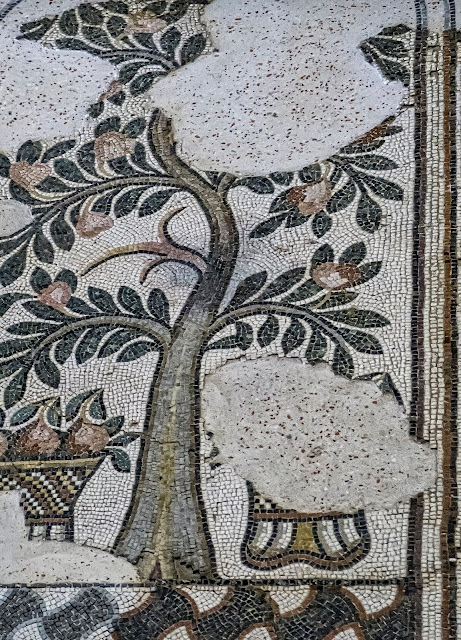Loupian Roman villa n the village of Loupian in the Hérault départment of France, between Montpellier and Béziers, the heart of Gallia Narbonensis
Loupian Roman villa n the village of Loupian in the Hérault départment of France, between Montpellier and Béziers, the heart of Gallia Narbonensis.
Excavations on a three-hectare site south of the village have revealed remains of a Roman farm villa with extensive 2nd-century CE Gallo-Roman mosaics. The site was occupied for more than 600 years. Originally a modest farmstead built a few kilometres south of the Via Domitia, on the hillside overlooking the Bassin de Thau, it rapidly prospered and grew. During the early Empire, in the 1st and 2nd centuries, the villa was a large patrician residence with thermal springs. The main agricultural activity was viticulture, for which a storehouse capable of holding 1,500 hl of wine was constructed. This period also saw the building of a small port on the northern shore of the Bassin de Thau, as well as pottery workshops producing amphorae for the transportation of wine. In the 5th century, the villa was completely rebuilt and the owner's home turned into a small mansion. The thirteen ground floor rooms are covered in multicoloured, highly decorated mosaics.
Excavations on a three-hectare site south of the village have revealed remains of a Roman farm villa with extensive 2nd-century CE Gallo-Roman mosaics. The site was occupied for more than 600 years. Originally a modest farmstead built a few kilometres south of the Via Domitia, on the hillside overlooking the Bassin de Thau, it rapidly prospered and grew. During the early Empire, in the 1st and 2nd centuries, the villa was a large patrician residence with thermal springs. The main agricultural activity was viticulture, for which a storehouse capable of holding 1,500 hl of wine was constructed. This period also saw the building of a small port on the northern shore of the Bassin de Thau, as well as pottery workshops producing amphorae for the transportation of wine. In the 5th century, the villa was completely rebuilt and the owner's home turned into a small mansion. The thirteen ground floor rooms are covered in multicoloured, highly decorated mosaics.






















Comments
Post a Comment